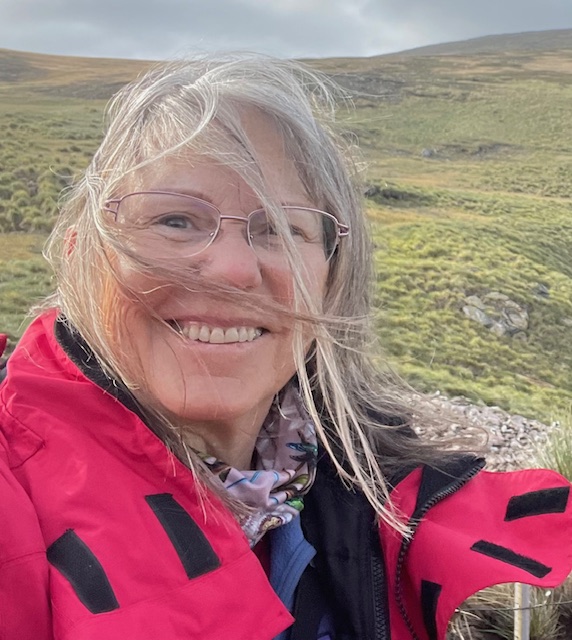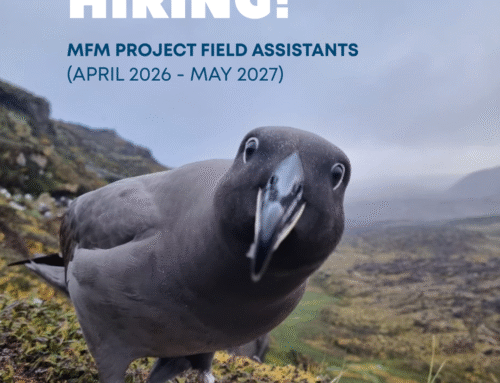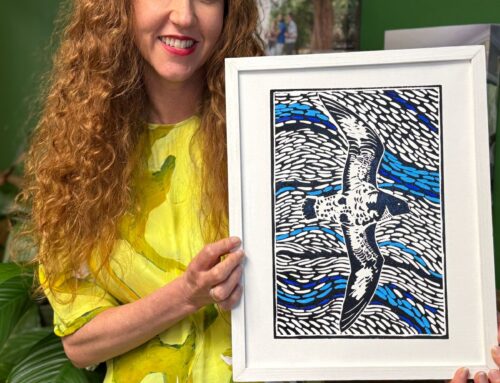Above photo: Dorothy Bedford in the Falkland Islands, photograph by Alison Arter
During BirdLife South Africa’s Flock to Marion AGAIN! 2025 voyage to Marion Island in January this year, Dorothy Bedford generously sponsored the Saving Marion Island’s Seabirds: The Mouse-Free Marion (MFM) Project with 50 hectares towards ridding the island of its introduced House Mice. Her donation has been listed in the “Giant Petrel” category on the MFM Project’s Honour Roll.
On the last full day of the voyage coming back from Marion Island a raffle under the auspices of BirdLife South Africa was held for all the onboard hectare sponsors. Dorothy walked away with the main prize, a one-of-a-kind limited edition pair of Swarovski CL 10×30 binoculars inscribed with the name and coordinates of Marion Island’s highest peak, Mascarin. The binoculars were kindly donated by long-time MFM supporter Andrew Whysall (himself a 150-hectare sponsor) of Whylo Distributers.
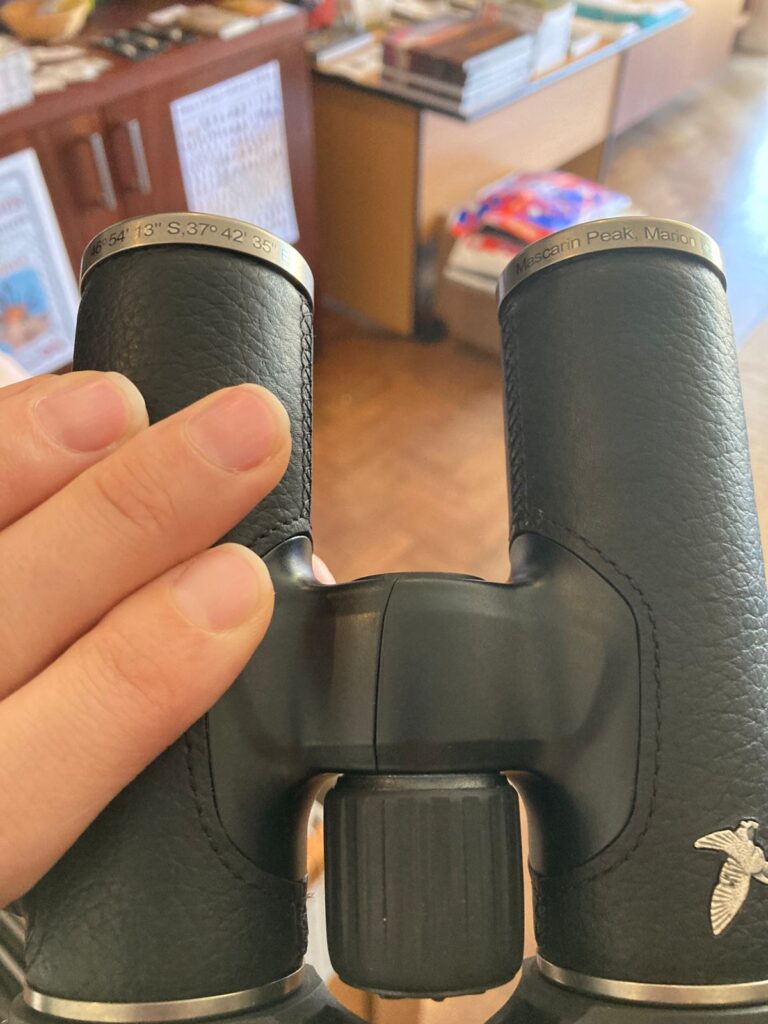
The engraved binoculars won by Dorothy Bedford, photograph by Tarryn McKechnie
MFM News got in touch with Dorothy to learn more about her and why she has become an ambassador for the MFM Project through her support. She replies that she lives outside Philadelphia in Pennsylvania, USA in “very birdy” Chester County and that “the glorious Swarovski bins do attract a fan club when I travel with them to a bird festival, when I get to explain the “flocking behaviour” of BirdLife South Africa”.
Dorothy goes on to say “I’ve had a patchwork career: international banking, director of major anniversary activities for Princeton University (of which I am an alumna), board chair of both a small foundation and a US$ 10 million retail cooperative, and I partnered with my husband in growing a small credit card security software company. I took up birding seriously in 2013. Pelagic birding attracted my fancy because, as a young woman, I was a navigator on an ocean-racing boat but quit sailing when I moved the family inland for a new job. When I retired in 2013 and took up birding seriously, it was a short jump to figure out that pelagic birding is my happiest place (and I don’t suffer from seasickness). My favourite pelagic spot in the USA is out from Cape Hatteras, North Carolina, where the Gulf Stream is only about two hours offshore and where one can see a Cory’s Shearwater. I am not a “lister”, although my global count is around 3000. My destination countries are as much about history, geography, culture and people as they are about birds.”
“I heard about the Flock 2025 voyage to Marion Island from companions on a bird survey service project. Pelagic birding can be demanding physically, and to see older birders, mobility-impaired birders and multiple-generation families birding together on the Flock 2025 voyage, along with many independent women, was a glorious birding experience. My husband and I have provided financial support for seabird research in the USA since 2019, and then became involved with the 2023 attempt to eradicate Black Rats and House Mice on Floreana Island in the Galapagos. It is now a great pleasure for us to support the eradication of House Mice on Marion Island.”
The Mouse-Free Marion Project team offers its grateful thanks to Dorothy Bedford, and the many others like her, who have supported the MFM Project by sponsoring hectares. It is good to know we have so many ambassadors out there!
John Cooper, News Correspondent, Mouse-Free Marion Project, 02 September 2025
*******************************************************************************
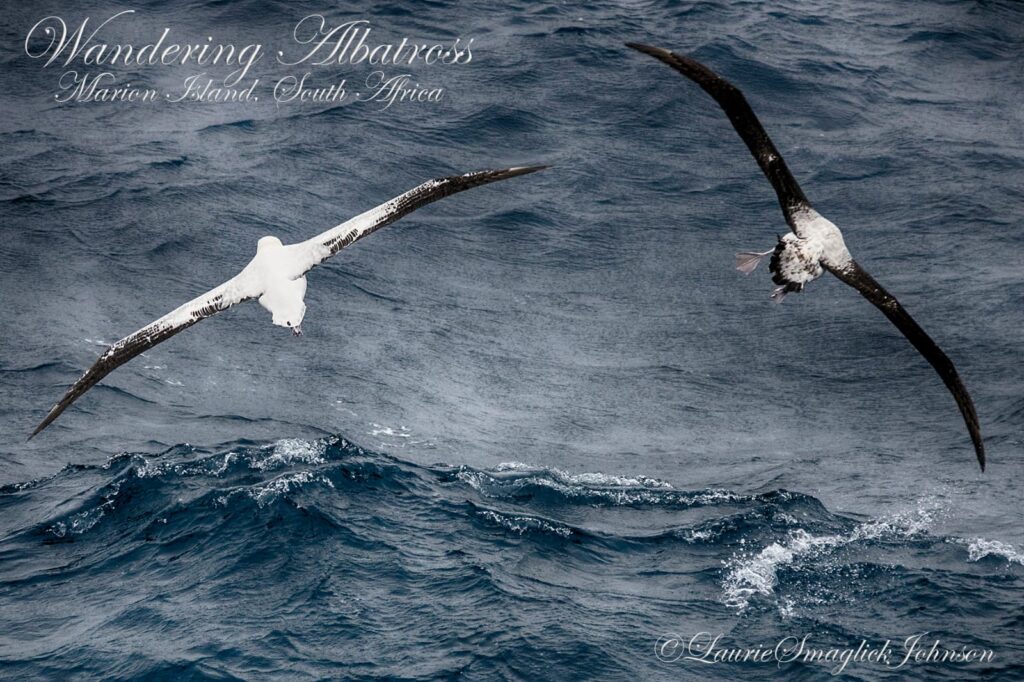
Wandering Albatrosses Diomedea exulans in flight on the Flock to Marion AGAIN! 2025 voyage, photograph by Laurie Smaglick Johnson
The Mouse-Free Marion Project is a registered non-profit company (No. 2020/922433/08) in South Africa, established to eradicate the invasive albatross-killing mice on Marion Island in the Southern Ocean. The project was initiated by BirdLife South Africa and the South African Department of Forestry, Fisheries and the Environment. Upon successful completion, the project will restore the critical breeding habitat of over two million seabirds, many globally threatened, and improve the island’s resilience to a warming climate. For more information or to support the project please visit mousefreemarion.org.


